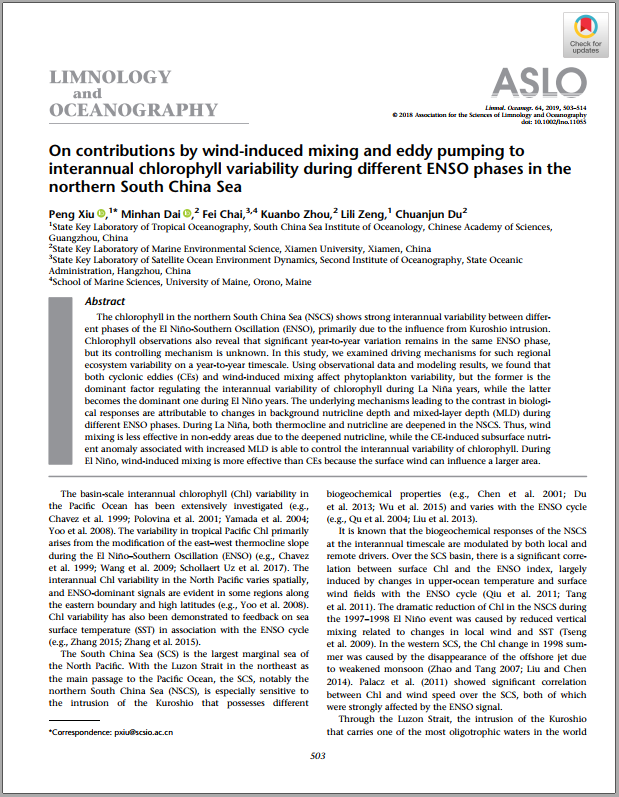Abstract
The chlorophyll in the northern South China Sea (NSCS) shows strong interannual variability between different phases of the El Nino-Southern Oscillation (ENSO), primarily due to the influence from Kuroshio intrusion. Chlorophyll observations also reveal that significant year-to-year variation remains in the same ENSO phase, but its controlling mechanism is unknown. In this study, we examined driving mechanisms for such regional ecosystem variability on a year-to-year timescale. Using observational data and modeling results, we found that both cyclonic eddies (CEs) and wind-induced mixing affect phytoplankton variability, but the former is the dominant factor regulating the interannual variability of chlorophyll during La Nina years, while the latter becomes the dominant one during El Nino years. The underlying mechanisms leading to the contrast in biological responses are attributable to changes in background nutricline depth and mixed-layer depth (MLD) during different ENSO phases. During La Nina, both thermocline and nutricline are deepened in the NSCS. Thus, wind mixing is less effective in non-eddy areas due to the deepened nutricline, while the CE-induced subsurface nutrient anomaly associated with increased MLD is able to control the interannual variability of chlorophyll. During El Nino, wind-induced mixing is more effective than CEs because the surface wind can influence a larger area.




 粤公网安备44011502001245号
粤公网安备44011502001245号